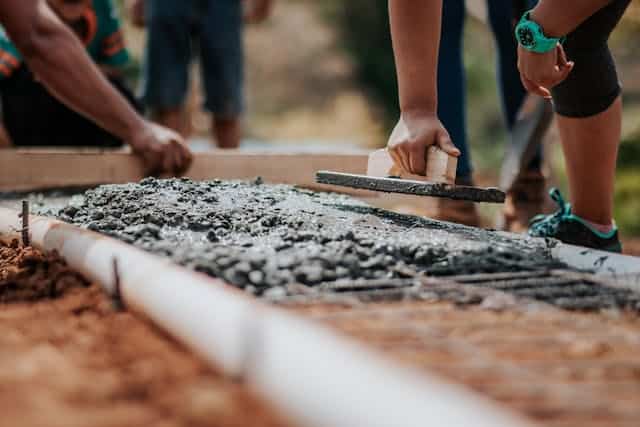Technology integration is becoming a part of every field. The construction industry is one of them. Some exciting trends and technologies are shaping the future of prefab buildings. The advancement in automation, robotics, & 3D printing is getting heavily integrated into structural design. From the use of sustainable materials to innovative designs, steel structures are becoming more environmentally friendly and energy efficient. Let’s look at some of the trends & techs that are positively influencing the construction world of steel.
Current Trends In Prefab Steel Buildings
1. Multi-Functionality
With metal structures, you can create flexible space. This can serve multiple purposes by adapting to ever-changing needs. For instance, if you have installed a metal barn for agricultural purposes, once it no longer serves, you can remodel it into an event venue space.
2. Sustainability
Using recycled steel reduces the overall carbon footprint of new construction. Structural steel is 25 times stronger than wood, so less material is needed for construction. Reducing material wastage and energy consumption makes prefab buildings an eco-friendly alternative to their traditional counterparts.
3. Energy Efficiency
Steel structures are being designed to be more energy-efficient. They have better insulation and energy-efficient features such as natural lighting and ventilation systems that enhance fresh air circulation. You can also add energy-star-certified electronic appliances that use less power and last longer than traditional ones.
4. Fast Assembly
The prefab industry can bank on leveraging 3D printing technology to make complex designs better and faster. With a 3D printer, one can make intricate, complex, and large designs that were not possible before. This opens up a whole new world of architectural innovation and imagination that can be brought to life.
5. Safety & Security
Steel is robust and does not rot or decay over time, making it suitable for security and safety. To increase its effectiveness, steel doors and windows can be reinforced.
6. Color Scheme & Cladding
Many metal builders these days offer a range of colors that allow more visually appealing metal structures. You can pick a color that matches an existing building for a seamless look or match the color of your newly installed metal structure with your brand logo or color scheme.
Another method is to use textured coatings and cladding to enhance the visual appeal of the steel panels. This will give the structure depth and character.
Technology Integration With Metal Buildings
1. Rise Of Prefabricated | Modular Construction
Prefab steel buildings are mass-produced in a controlled factory environment. This approach reduces construction, enhances quality control, and minimizes the wastage of raw materials. Off-site assembly and on-site integration are becoming popular as they reduce the complexity of installation. This makes the entire process seamless and hassle-free.
Steel prefab structures can reduce the overall cost by up to 30%. They reduce material and labor costs, improve design, and shorten project construction times. Construction sectors have started implementing artificial intelligence (AI), 3D printing, and drones to revolutionize prefabrication.
2. Remote Management With Smart Operations
Remote management enhances energy efficiency by allowing owners to monitor and control energy consumption remotely. This leads to cost savings for both residential and commercial units. It also improves security and safety measures by helping owners see real-time security, fire alarms, and access control.
You can manage internal operations inside prefab metal buildings, such as automation systems, utility data, security, fire, and HAVC systems. One can also manage external operations like social media, work orders, business data, and other information.
3. Schedule Maintenance With Data & Advanced Analytics
A business firm can use large steel structures as a warehouse and distribution center or office building. For warehouses, it becomes necessary to manage goods and services effectively. With advanced data analytics, one can schedule packaging according to urgency for easy workflow. One can place frequently sold items near the packaging unit or arrange items according to season.
Integrating technologies helps schedule work and maintain the building. This will enhance visibility and operational efficiency.
4. Augmented Reality (AR)
Many metal builders these days offer their clients a 3D design tool that they can use to create steel buildings with custom design features. This design can be viewed on their property via AR technology. All this makes the entire process more engaging and interactive. Clients can identify any design flaw or size issue and enhance communication.
5. Automated Fabrication Of Design
Precise design and cost estimation reduce expenses and promote fast delivery. Robotic systems can handle tasks such as cutting with a laser, welding to precision, and assembling steel components correctly, leading to high-quality builds that last for decades and decreasing the project timeline.
Advantages Of Investing In Smart Prefab Structures
- You get in-depth data to manage operations effectively and efficiently.
- You can manage and reduce energy consumption.
- It reduces monthly operational costs.
- You can apply for LEED certification, benefit from tax credits, and positively impact by following green norms.
- Lastly, it increases your asset value.
Some Areas In Which Metal Buildings Are Leaving Marks
| RESIDENTIAL | AGRICULTURAL | COMMERCIAL |
| 1. Metal Garage 2. Steel Carport 3. Metal Lean-To 4.Metal Home 5. Patio | Deck | 1. Metal Barn for Vehicles 2. Loafing Shed 3. Livestock Shelter 4. Dairy Barn 5. Riding Arena 6. Horse Barn 7. Steel Barndominium | 1. Warehouse 2. Restaurant 3. Cold Storage 4. Car Repair Shop 5. Office Building 6. Retail Store 7. Factory Outlet 8. Manufacturing Unit 9. Event Venue |
To Make The Long Story Short
As we learned above, prefab buildings allow faster construction, require less manpower, and improve quality control. Overall, they reduce project costs. In addition, the rise in these modular installation techniques enables greater flexibility and customization in the design. Let’s see how these trends will continue to evolve and transform the way we build our cities, homes, and workplaces.




